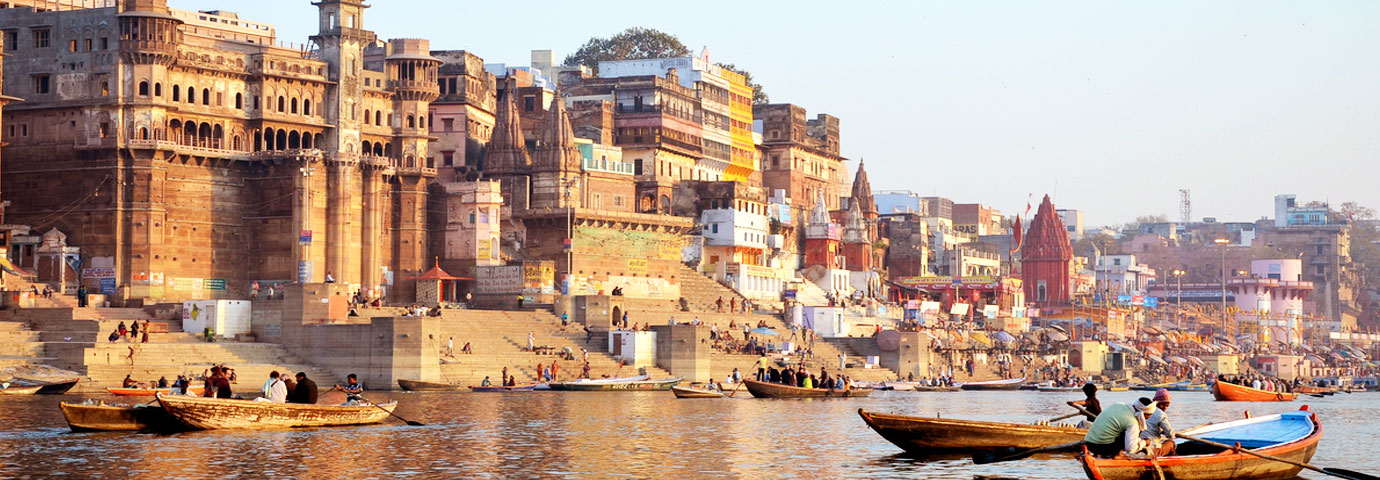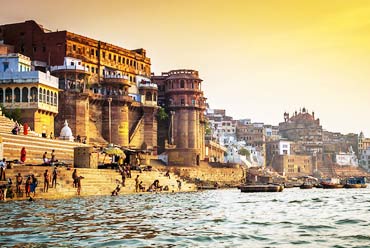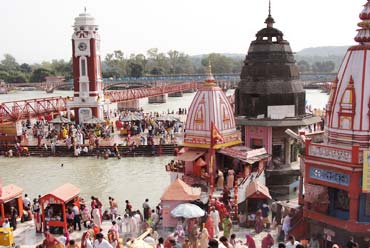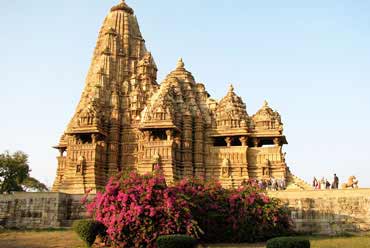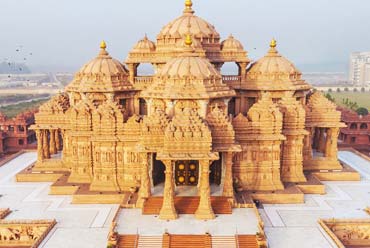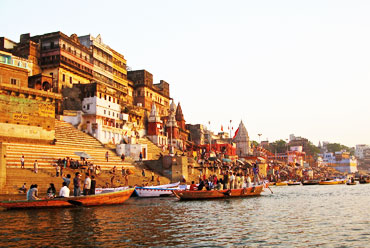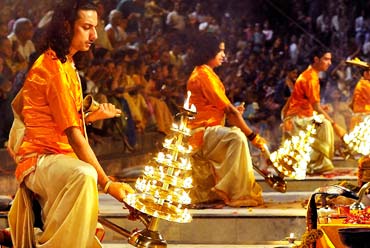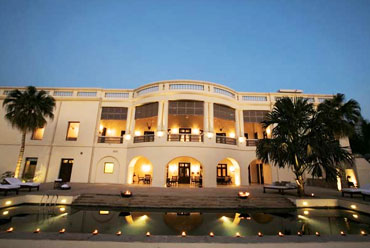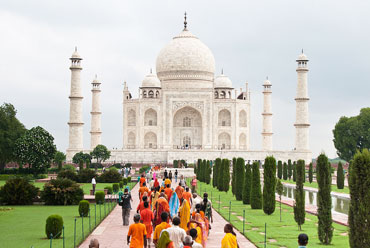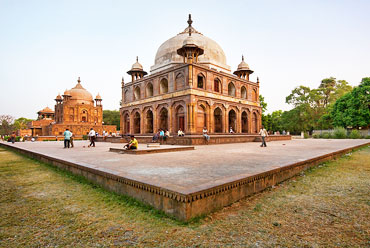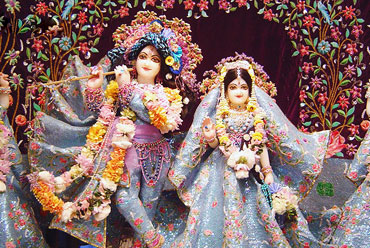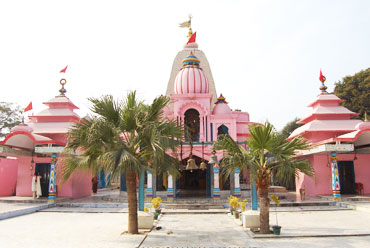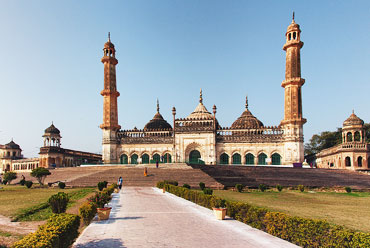Tourist Attractions in Varanasi
The numerous ghats along the bank of the Ganges present a varied scene from dawn to dusk. A ghat is a series of well-paved steps that lead to the water. A ghat in Varanasi usually has small temples built into its side, while the larger structures, housing the powerful gods and goddesses from the Hindu pantheon, form a formidable backdrop to the serene beauty of the meandering river. These ghats numbering more than a hundred, with their entourage of temples, form the axis on which the city developed. For centuries, the Hindus considered it very auspicious to bathe at the ghats of Varanasi. Everyday at dawn thousands of pilgrims can be seen offering salutations to the Sun God in waist-deep water, secure in their conviction that the muddy waters of the Ganges will wash away all the accumulated sins of their life. The oil lamps (diyas) and flowers set afloat on the river at dusk make a fascinating sight.
There are five important ghats in Varanasi where the pilgrims flock to take a bath-the Assi, Dasawamedha, Barnasangam, Panchganga, and Manikarnika. Each ghat has its own history and its own following. Many of the ghats were built and owned by the royal families of India; the Maharaja of Benaras built the Kali (or Sivala) Ghat, Maharaja Man Singh built the Mansarovar Ghat, while Ahilyabai Ghat is named after that legendary Queen Ahilyabai of Indore.
The best time to visit the ghats is at the break of dawn, when pilgrims perform the Surya Pranam immersed waist deep in the waters of the holy Ganges.
The best way to catch the essence of Varanasi is to travel down the Ganges by boat at six o'clock in the morning. Boats can be hired by the hour from the main steps of the Dasawamedha Ghat. The steady creek of ancient oars, the slap of wet garments, incessant chatter of the bathers amid a tinkling of scattered temple bells, watching Varanasi from the environs of a gently swaying boat is truly an experience worth treasuring.
Although Varanasi is famous as a Hindu pilgrimage center, one cannot ignore its distinct Muslim heritage. The powerful Sultans of Delhi and later the emperors of the Mughal dynasty were instrumental in constructing several mosques, and this predominantly Hindu city gradually attained a degree of cosmopolitanism. Aurangzeb, the last of the mighty Mughals, hastened this process of evolution and the mosques that he built still stand today. The great mosque of Varanasi, Gyanvyapi Masjid, has minarets towering 71 m above the Ganges and is an integral part of the city's skyline.
There is also the Golden Temple, dedicated to Lord Shiva. The temple today sits across the road from its original site. The present temple was built in 1776 by Rani Ahilyabai, while three and a quarter ton of gold plating on the towers were provided by Maharaja Ranjit Singh of Lahore. Next to the temple is the Well of Knowledge, where, as legend goes, the original Shiva lingam lies hidden.
There is another temple in this holy city-a temple dedicated not to the gods, but to Mother India. The Bharat Mata temple, as it is known, does not have idols or images of gods and goddesses: what it has is a marble relief map of Independent India. The father of the nation, Mahatma Gandhi, inaugurated the temple.
Benaras Hindu University is the largest residential university in Asia, a center of Sanskrit, Indian art, culture, and music. This university covers an area of 2000 acres, and was gifted by the king of Varanasi, a scholar of Sanskrit and Hindu philosopher himself. The university is around 10 km from the railway station.
Of the numerous temples that dot this ancient city, the important ones are the Durga Temple, Tulsi Manas Mandir, Vinayaka Temple, Annapurna Temple, Kal Bhairav, Jateshwar Mahadeo, and Maha Mritunjaya Temple.
Places Around Varanasi
A tourist to Varanasi must make it a point to visit the Ramnagar Fort and Sarnath, both situated on the outskirts of this city. The former, situated on the opposite bank of the Ganges, is the residential palace of the former Maharaja of Varanasi. The hall of public audience (Durbar Hall) and the royal museum housing collections of palanquins, elephant saddles, arms, furniture, costumes, etc., are of great interest. At the other end of the city is Sarnath. Here in the fabled deer park, where the Buddha preached his sermon enshrining the principles of his teaching into laws. There is a stupa and a large complex of ruined monasteries. Nearby also stands the Ashoka Pillar commemorating the Mauryan emperor's visit to the place more than 2,000 years back. The archeological museum located nearby holds a rich collection of items belonging to the Kushan and Gupta periods as well as from the Ashokan era.
One may also undertake quite a few enjoyable excursions from Varanasi. The fort of Chunar, about 37 km away, is famous for its close association with the Afghan ruler Sher Shah Suri. Kusumi Forest (8 km) and the Rajdari and Deodari Falls in the Chandraprabha forest (70 km) are beautiful picnic spots.

